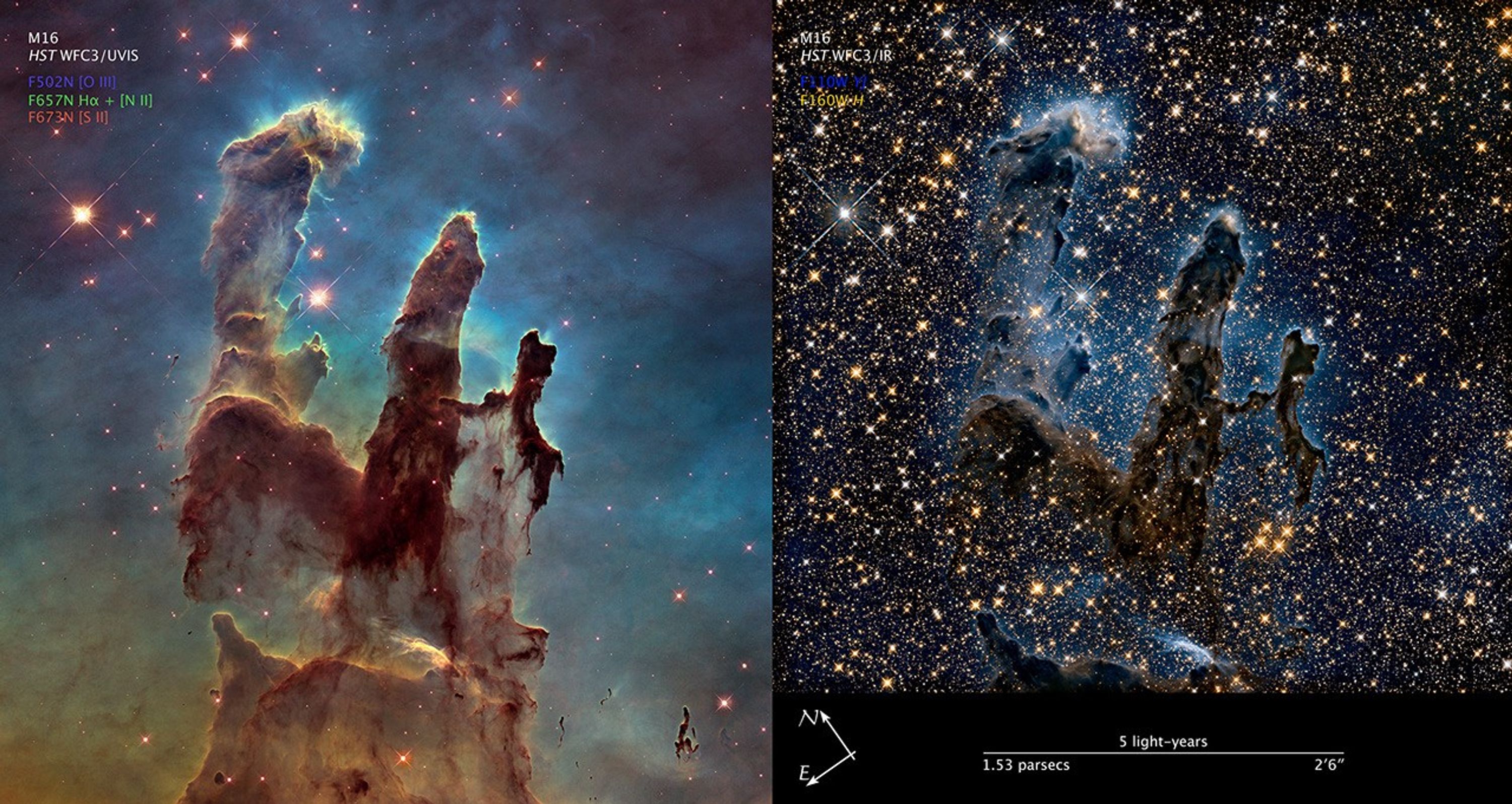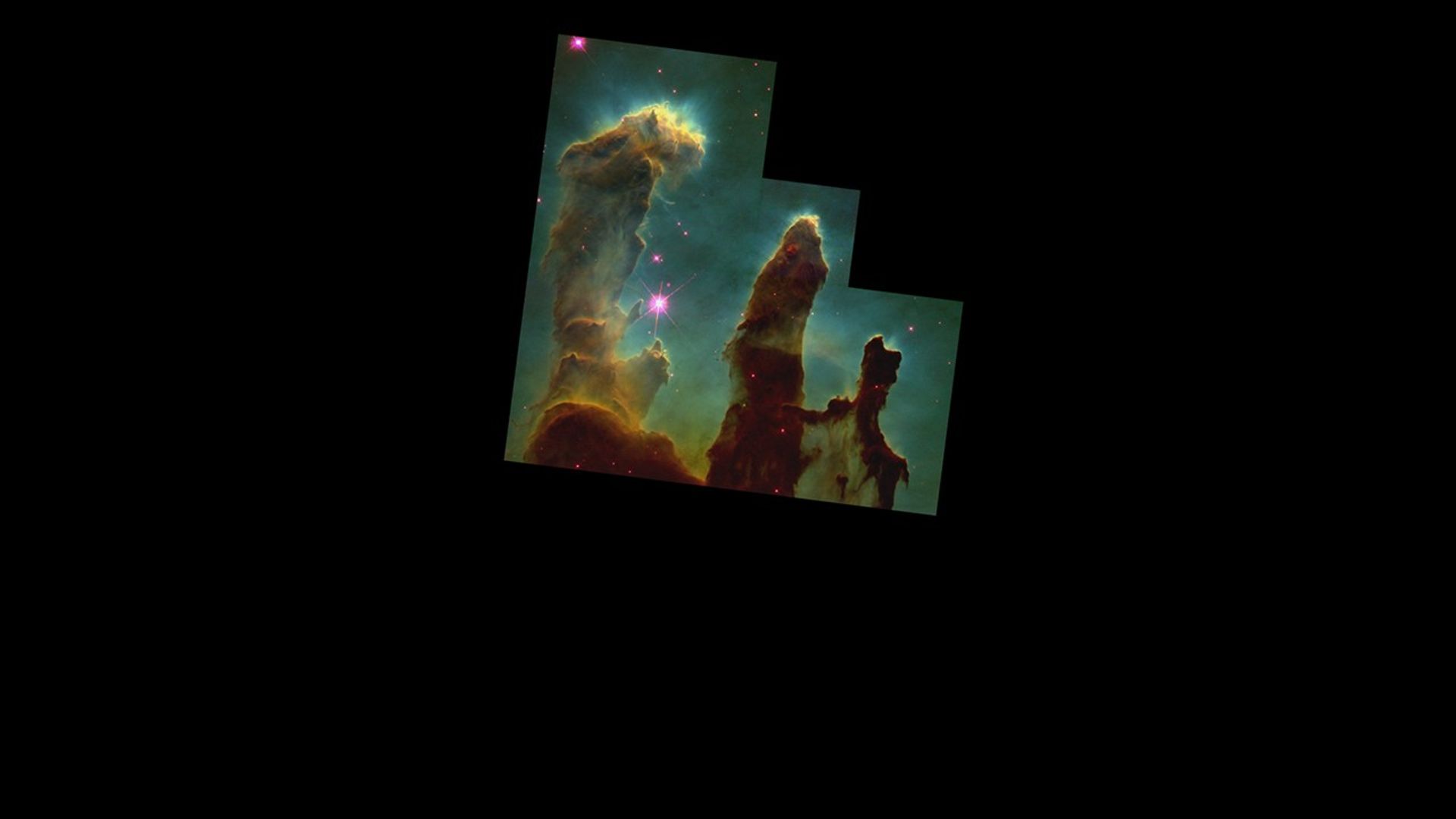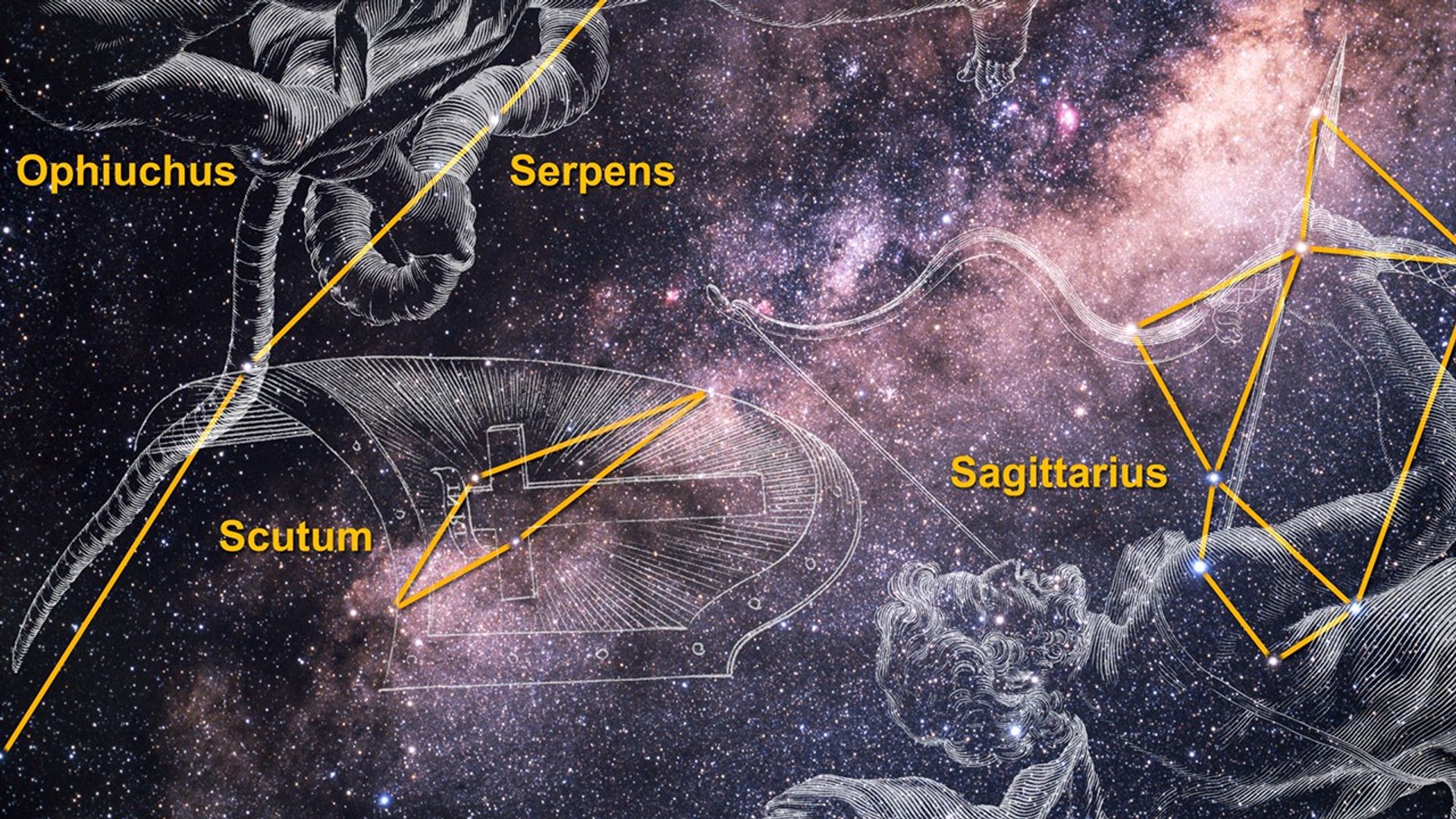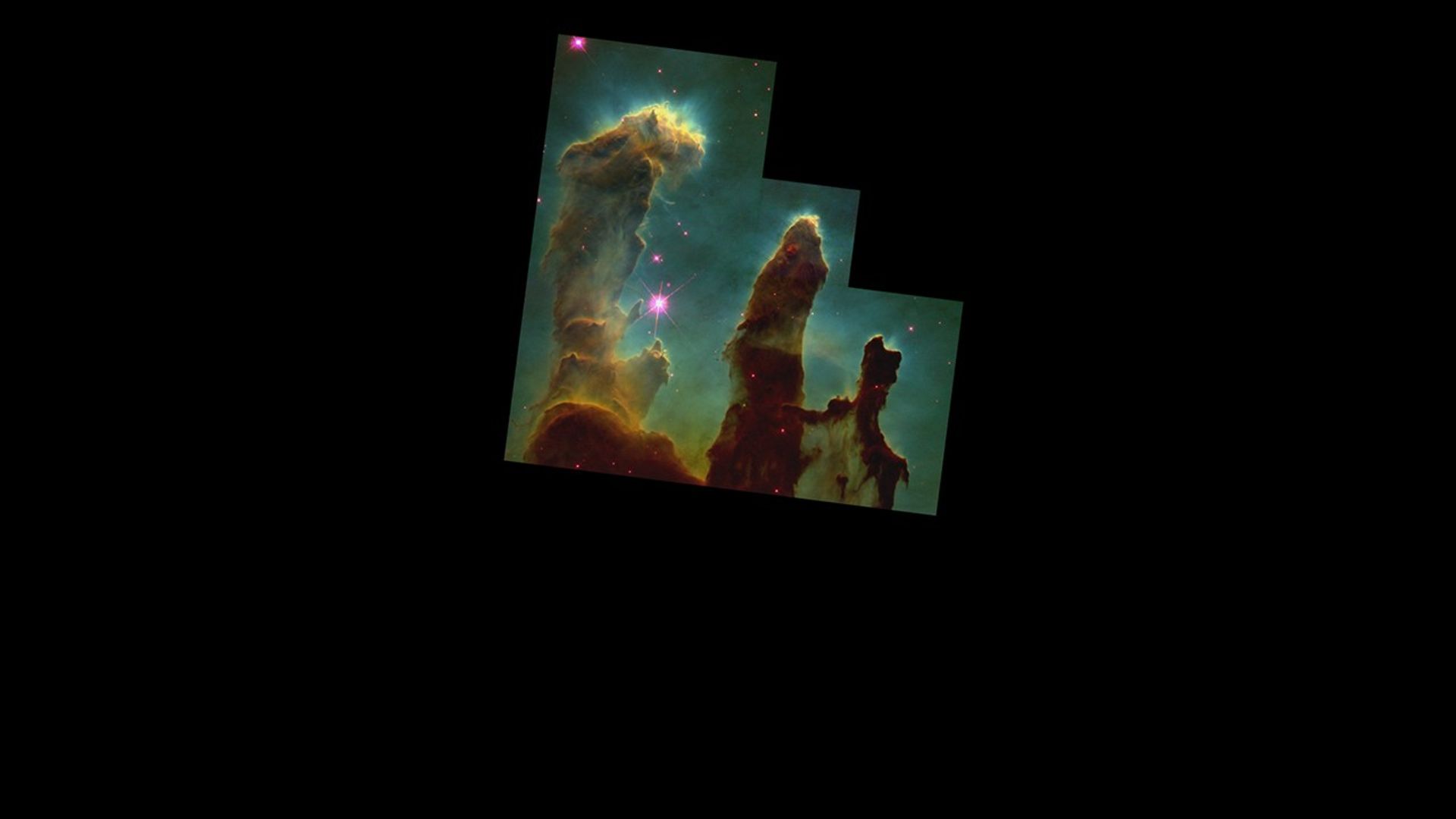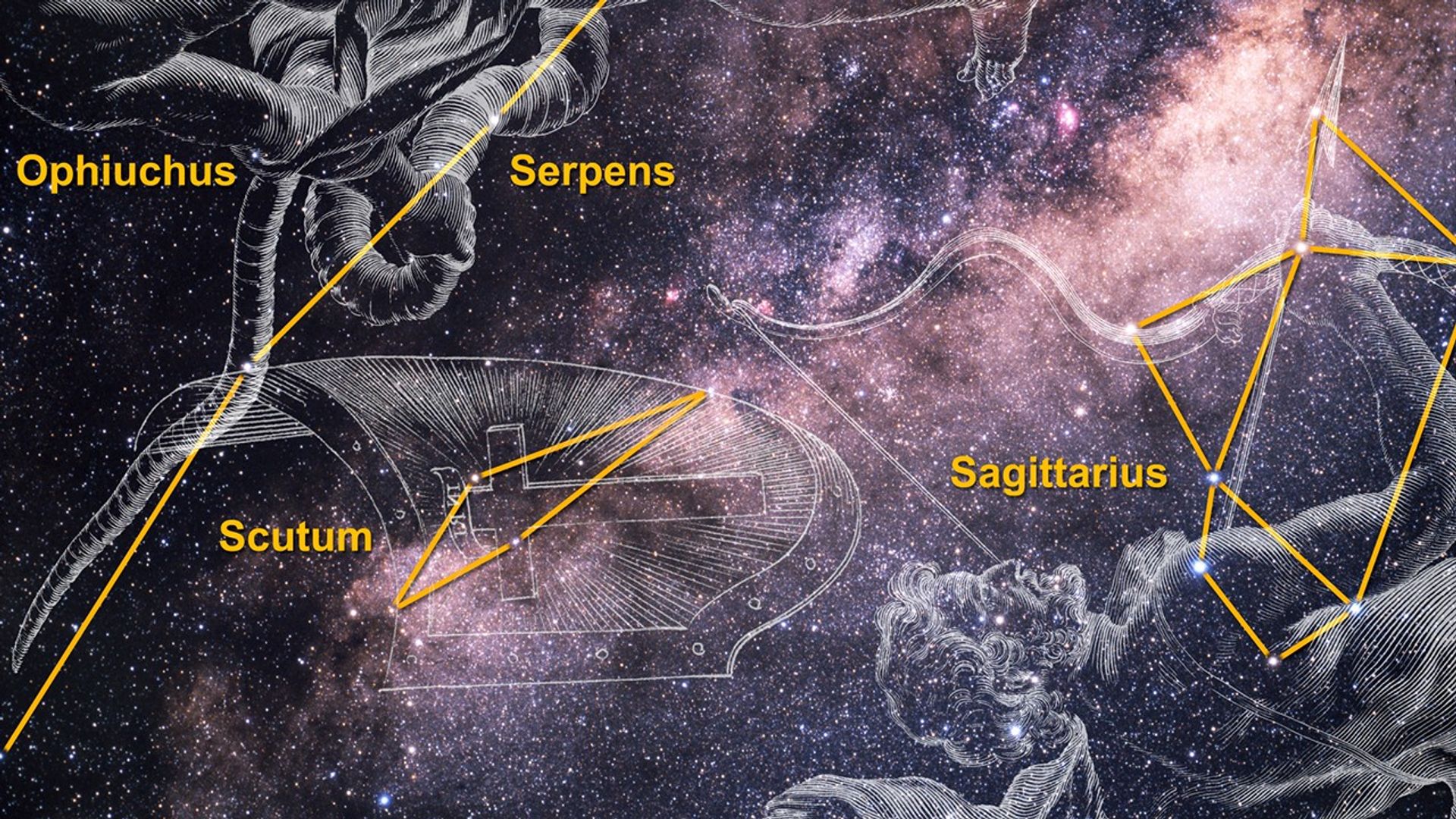1 min read
Comparison of Features in 1995 and 2014 Data
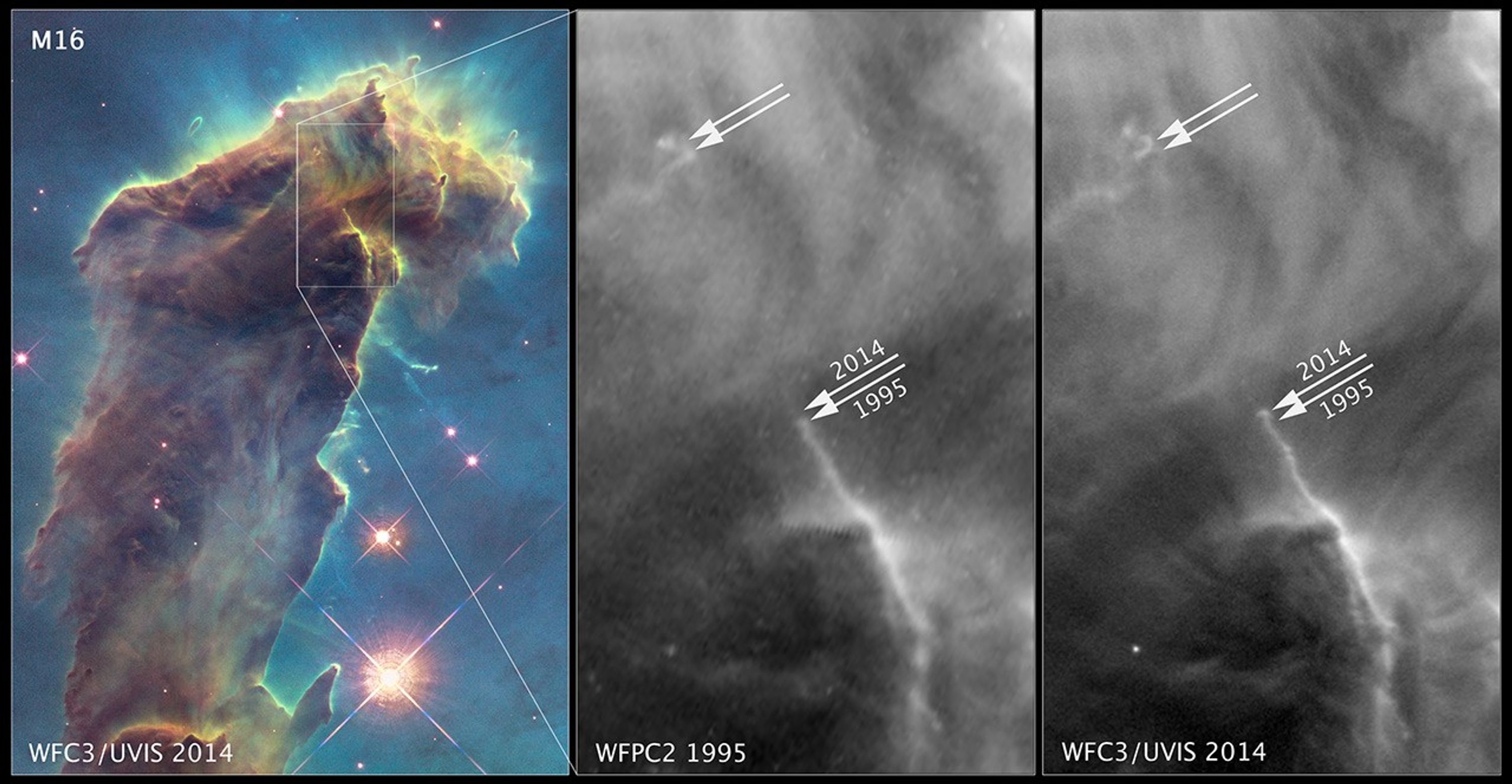
About the Object
- R.A. PositionR.A. PositionRight ascension – analogous to longitude – is one component of an object's position.18h 18m 48.17s
- Dec. PositionDec. PositionDeclination – analogous to latitude – is one component of an object's position.-13° 48' 26.03"
- ConstellationConstellationOne of 88 recognized regions of the celestial sphere in which the object appears.Serpens
- DistanceDistanceThe physical distance from Earth to the astronomical object. Distances within our solar system are usually measured in Astronomical Units (AU). Distances between stars are usually measured in light-years. Interstellar distances can also be measured in parsecs.6,500 light-years (2,000 parsecs)
About the Data
- Data DescriptionData DescriptionProposal: A description of the observations, their scientific justification, and the links to the data available in the science archive.
Science Team: The astronomers who planned the observations and analyzed the data. "PI" refers to the Principal Investigator.Data of M16 were obtained from the HST proposal 13926, P.I. Z. Levay, J. Mack, C. Christian, L. Frattare, M. Livio, S. Meyett, M. Mutchler, and J. Sokol (STScI/AURA), and K. Noll (NASA/GSFC). - InstrumentInstrumentThe science instrument used to produce the data.HST>WFPC2 and HST>WFC3/UVIS
- Exposure DatesExposure DatesThe date(s) that the telescope made its observations and the total exposure time.April 1, 1995 and September 2014
- Object NameObject NameA name or catalog number that astronomers use to identify an astronomical object.M16, Eagle Nebula, NGC 6611
- Object DescriptionObject DescriptionThe type of astronomical object.Emission Nebula
- Release DateJanuary 5, 2015
- Science ReleaseHubble Goes High Def to Revisit the Iconic ‘Pillars of Creation’
- CreditNASA, ESA, and the Hubble Heritage Team (STScI/AURA)
Related Images & Videos
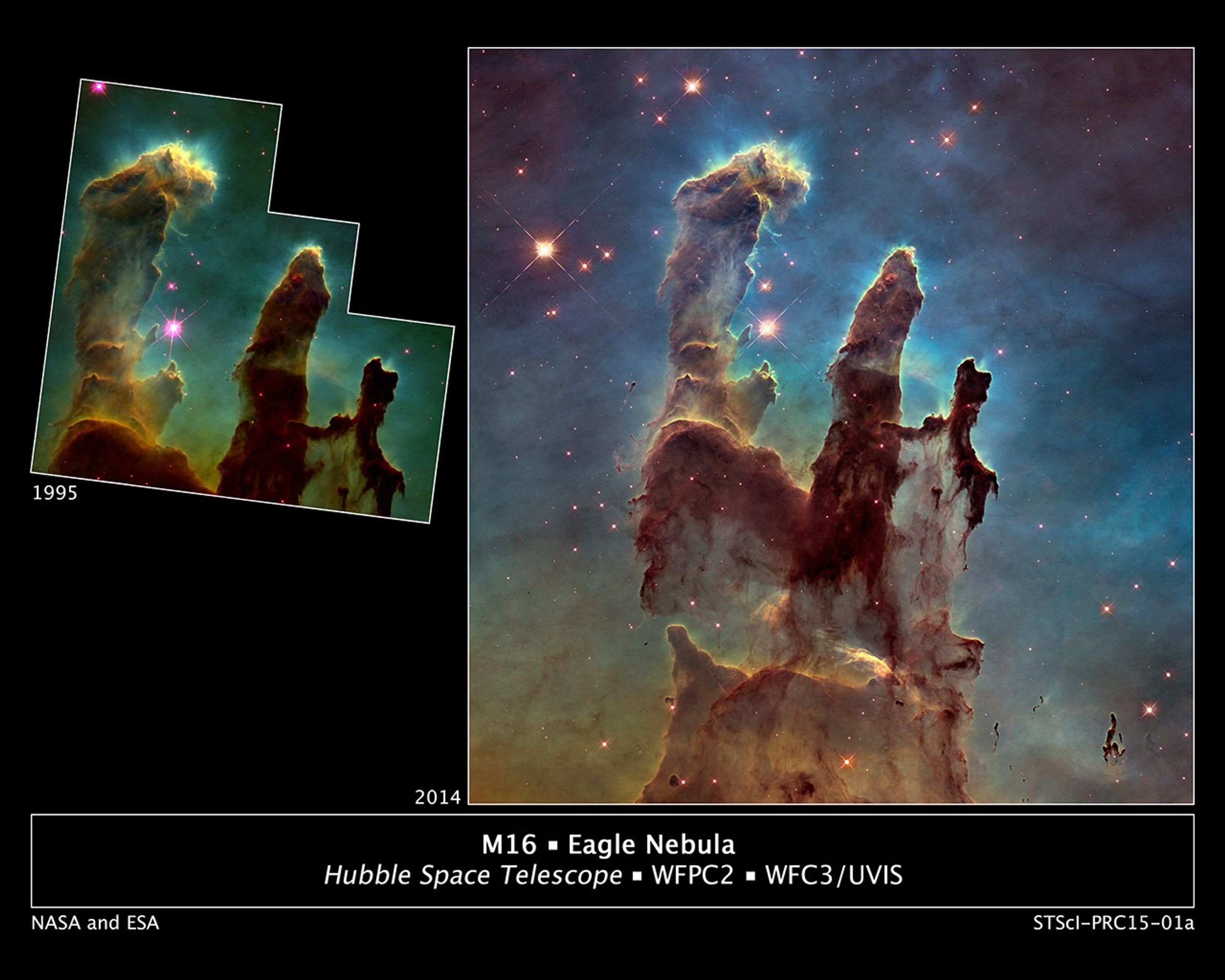
Hubble Revisits the Famous 'Pillars of Creation' to Celebrate 25th Anniversary
NASA's Hubble Space Telescope has taken a bigger and sharper photograph of the iconic Eagle Nebula's "Pillars of Creation," shown at right. The original 1995 Hubble image of the gaseous towers, taken with Hubble's Wide Field Planetary Camera 2, is shown at left. Astronomers...

2014 Hubble WFC3/UVIS Image of M16
NASA's Hubble Space Telescope has revisited the famous Pillars of Creation, revealing a sharper and wider view of the structures in this visible-light image. Astronomers combined several Hubble exposures to assemble the wider view. The towering pillars are about 5 light-years...
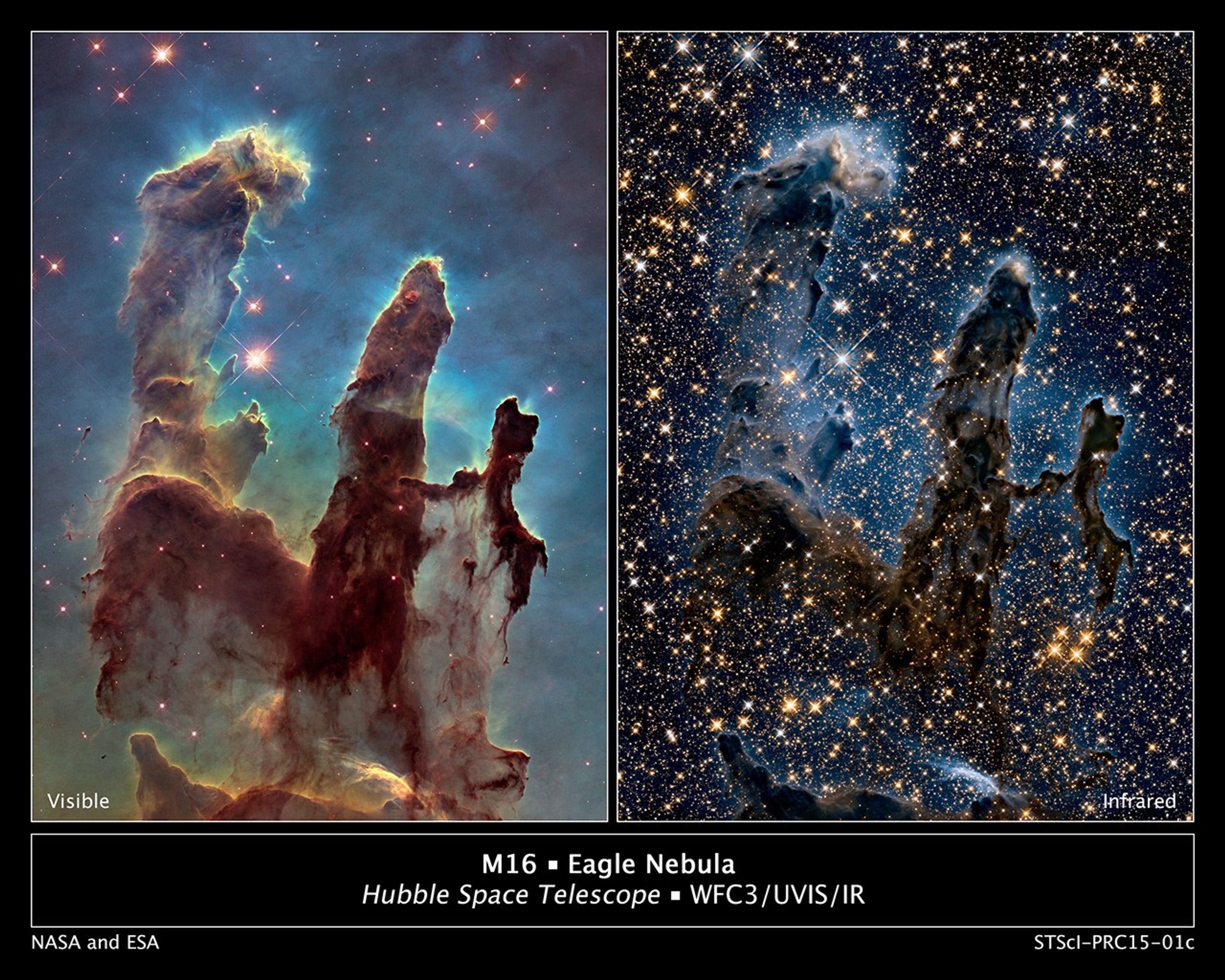
A View of the Pillars of Creation in Visible and in Near-Infrared Light
These images by NASA's Hubble Space Telescope reveal how different the iconic Pillars of Creation appear in visible and in near-infrared light. In the visible-light image at left, astronomers combined several exposures to show a wider view of the pillars and the surrounding...

2014 Hubble WFC3/UVIS Image of M16 (Cropped)
NASA's Hubble Space Telescope has revisited the famous Pillars of Creation, revealing a sharper and wider view of the structures in this visible-light image. Astronomers combined several Hubble exposures to assemble the wider view. The towering pillars about are 5 light-years...

2014 Hubble WFC3/IR Image of M16 (Cropped)
This NASA Hubble Space Telescope image, taken in near-infrared light, transforms the pillars into eerie, wispy silhouettes, which are seen against a background of myriad stars. The near-infrared light can penetrate much of the gas and dust, revealing stars behind the nebula as...

A Near-Infrared View of the Pillars of Creation
This NASA Hubble Space Telescope image, taken in near-infrared light, transforms the pillars into eerie, wispy silhouettes, which are seen against a background of myriad stars. The near-infrared light can penetrate much of the gas and dust, revealing stars behind the nebula as...
Share
Details
Claire Andreoli
NASA’s Goddard Space Flight Center
Greenbelt, Maryland
claire.andreoli@nasa.gov


























